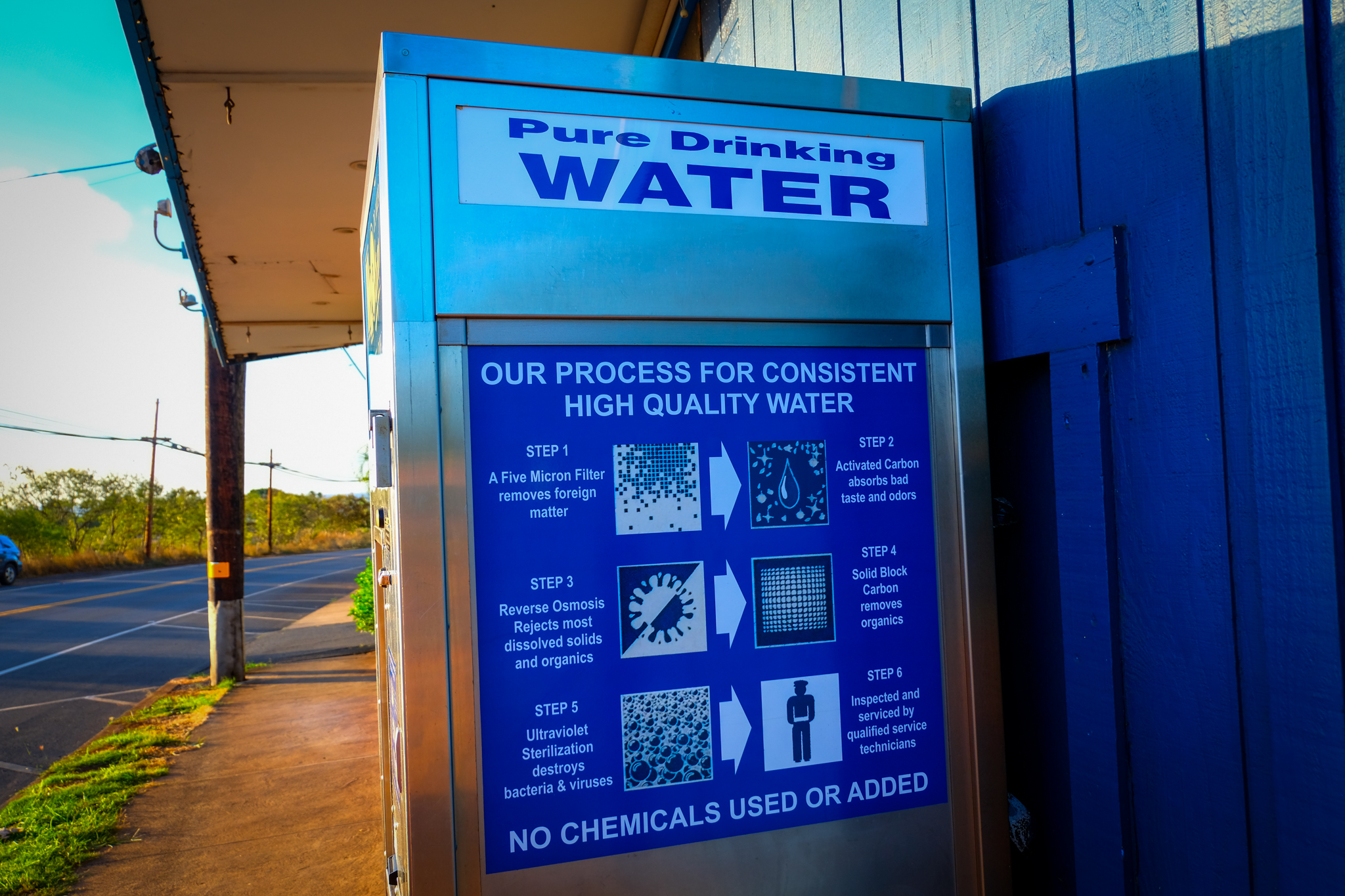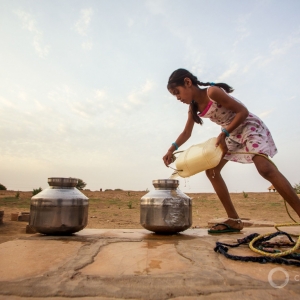The Stream, May 3, 2023: Native Hawai’i Farmers Advocate For Land Back While Restoring Historic Water Systems

Vending machine selling water on Maui, 2021. Photo: Christian Thorsberg
YOUR GLOBAL RUNDOWN
- On Maui, where colonial and commercial parties stole land and water decades ago, Native Hawai’ian farmers are working to restore ancient water systems while litigating for reparations.
- A new study finds that the risk of natural disasters caused by glacial melt and global warming is especially profound in India, Pakistan, Peru, and China.
- Sámi Indigenous and rural communities are restoring and rewilding peatland ecosystems that have been drained for decades in Finland.
- The Supreme Court will decide which wetland ecosystems are included in the Clean Water Act, the law that regulates the dumping of pollutants into American waters.
Amidst drought, farmers in southern Taiwan are being paid not to grow crops as the government reserves water for semiconductor production.
“When there is no rain, things grow at the wrong time.Growing rice protects the local ecology by locking in moisture and keeping ground temperatures stable.” — Zhang Meixue, head of a farmer’s association in southern Tainan county.
Now in the third year of an extended drought, reservoirs across Taiwan are consistently sitting at below 30 percent capacity, and as low as 11 percent in some rice-growing regions. But the lack of rain isn’t being felt just by farmers — Taiwan Semiconductor Manufacturing Company (TSMC), the most advanced and important chip manufacturer in the world, also requires water.
Faced with a decision, the government is prioritizing factories over farmers, and subsidizing the latter to not grow crops, NPR reports. Critics of the decision say that not growing crops hurt soil and ecosystem health, and that importing huge amounts of food is not a sustainable agricultural model.
TSMC and other factories are pledging to limit their water use, though semiconductor production is accelerating. Cities are limiting residential water use, “cutting tap water off for two days each week.” Many of the water conservation plans that have been created still depend on the drought ending, which hasn’t yet happened.
— Christian Thorsberg, Interim Stream Editor
Recent WaterNews from Circle of Blue
- Cholera Cases Spike Amid Extreme Weather, Conflict — Without clean water and sanitation, disease outbreaks multiply.
- U.S. Pushes Farmers to Develop A New Crop: Energy — But more heavily fertilized corn and more manure for methane raises worries about water pollution.
The Lead
Before it was overthrown and annexed by the United States, the sovereign Hawai’ian Kingdom gave more than 8,000 Native tenant farmers “small parcels called kuleana lands” in the mid-1800s, Sierra Magazine reports. Traditionally, the farmers grew taro on these kuleana lands, using water from nearby streams to irrigate the crops.
But an influx of outside-owned plantations grew to divert water from these streams in order to irrigate sugarcane fields, and for decades both land and water fell overwhelmingly under the control of private businesses, squeezing out Native farmers. Today, according to Indigenous-led water rights group Hui o Nā Wai ‘Ehā, “millions of gallons of public freshwater are still being sold for private profit,” and as Sierra Magazine reports, “less than 2 percent of original awardees of kuleana land still retain ownership. [And of those,] fewer than 10 percent still utilize that land for farming.” The wetland fields where taro once grew have largely dried up, replaced with invasive plants and rocky outcrops.
Led by Native farmers, activists, and nonprofit organizations on Maui, the question of who truly owns the water in Hawai’i was taken, after a decade of legal speed bumps, to the Hawai’i Supreme Court in 2012, which ruled two years later that the state had failed to give proper consideration to the rights of Native Hawai’ians. In 2021, a new Maui Water Use and Development Plan was released with an aim to protect traditional water rights and resources.
The work continues for Native farmers on Maui, who are also working to restore the traditional wetland ecosystems and build community-oriented, future-proof farming systems — all this on the heels of an uncharacteristic drought on the island, one of the driest in the state.
This Week’s Top Water Stories, Told In Numbers
15 million
People imperiled by flooding from high-altitude lakes fed by melting glaciers, Yale Climate Connections reports. More than half of these people live in India, Pakistan, Peru, and China, according to the study, published in the journal Nature. Similarly, the Diplomat reports that flooding from glacial melt and the disappearance of ice in Nepal are causing Indigenous communities to abandon their mountain villages in search of safer areas with better water and food security.
130,000
Acres of formerly drained peatlands rewilded by Sámi Indigenous and rural communities in Finland, nearly a century after the country drained habitats across the country to make way for development and mines, Yale Environment 360 reports. The group has bought 80 sites in Finland, rewilding the land and restoring the flow to river systems and lake basins, while also coordinating an international network of cultural and environmental stewards, called Snowchange.
On the Radar
The Clean Water Act protects the United States’ “navigable waters” from pollution and the dumping of toxic chemicals, but conservatives in Congress are making a case that many wetlands — swamps, marshes, bogs, and more — do not meet this classification, Grist reports. An upcoming Supreme Court case will decide if these crucial ecosystems — which protect coastlines, provide wildlife habitat, sequester carbon, support vegetation growth and diversity, and keep waters clean and healthy —- will become legal dumping grounds.
More Water News
Eco-evolution: A new study finds that four species of freshwater fish in Costa Rica were smaller on average after Hurricanes Irma and Maria hit the country, NEON reports.
Horn of Africa: Scientists have concluded that the drought in East Africa — which since 2020 has killed millions of animals and made tens of millions of people in Kenya, Somalia, and Ethiopia acutely food insecure — was caused by climate change, InsideClimate News reports.
Christian Thorsberg is an environmental writer from Chicago. He is passionate about climate and cultural phenomena that often appear slow or invisible, and he examines these themes in his journalism, poetry, and fiction.






Leave a Reply
Want to join the discussion?Feel free to contribute!